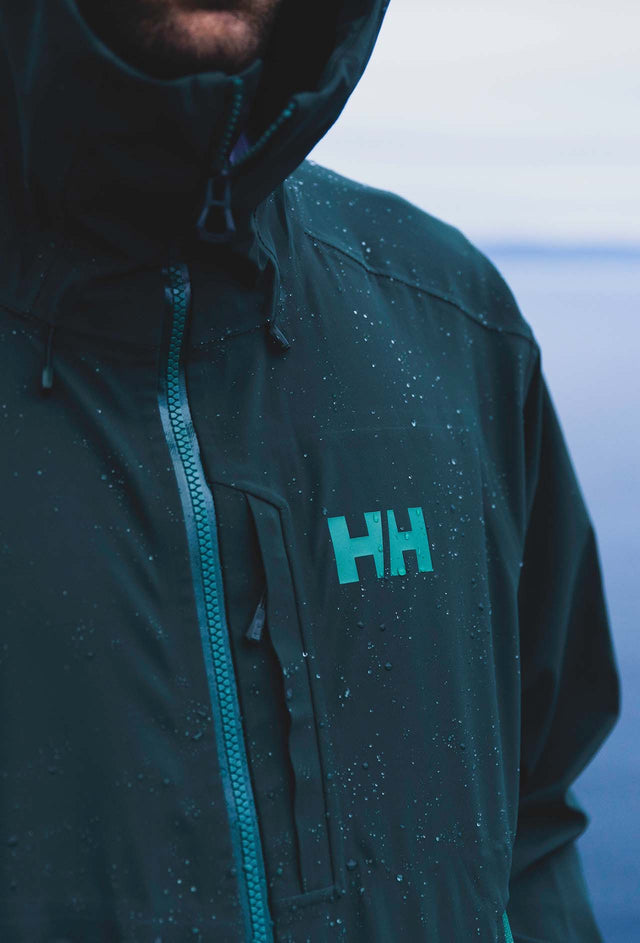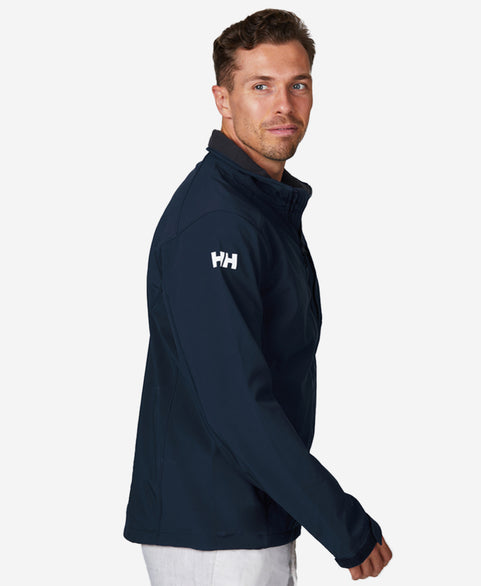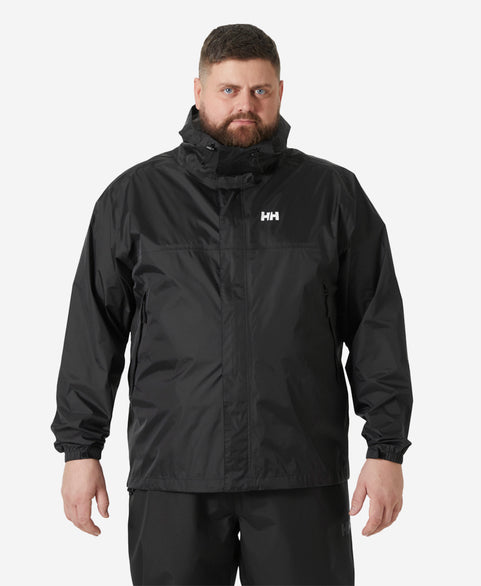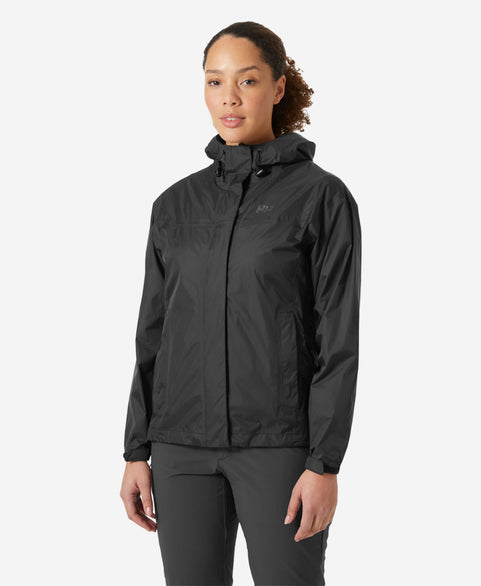April 26, 2023 | Helly Hansen
A JACKET THAT IS CLEAN IS A JACKET THAT PERFORMS
As you prepare for your next season of outdoor and mountain adventures, ask yourself if your gear is ready to perform its best. Especially your technical outerwear, like your shell jacket.
CONTENTS
What is a shell jacket?
When is it time to clean my jacket?
When is it time to re-waterproof my jacket?
How to clean a shell jacket.
How to re-waterproof a shell jacket.
WHAT IS A SHELL JACKET?
A shell jacket refers to any technical, non-insulated and lightweight rain jacket or outdoor jacket that is designed to repel water while still maintaining breathability. They most often utilise a multi-layer fabric system and some type of membrane layer internally to allow sweat vapour to escape, while simultaneously keeping out precipitation. We developed the HELLY TECH® system – our own unique technology for waterproof and breathable outer layers. Shell jackets are the standard for staying dry during outdoor activities like hiking, exploring, and mountaineering, but they require intentional care in order to maintain their high level of performance. They will lose water-repellency over time and with wear & tear, but they can be rejuvenated
WHEN IS IT TIME TO CLEAN MY JACKET?
REASON #1 TO CLEAN YOUR SHELL JACKET: IT’S DIRTY.
It’s time to clean your shell jacket when something obvious happens to it.
Did you…
Bump into a sappy tree on your last hike? Store your jacket at the bottom of your closet, all crumpled and creased? Spill your “summit beer” all over your jacket Start to notice an undesirable odor coming from your jacket?
REASON #2 TO CLEAN YOUR SHELL JACKET: IT’S WETTING OUT.
Once a jacket’s face fabric starts absorbing water rather than repelling it (this is called “wetting out”), the breathability of the jacket also stops functioning properly. If you lose breathability in a jacket, your body heat and sweat vapor cannot escape, creating more moisture vapor, leading to a “leaking” feeling of moisture against your skin. This is referred to as “sweating out” from the inside.
If your waterproof-breathable jacket is “wetting out”, it is time to clean it. Nearly all outdoor brands and manufacturers use a hyper-thin DWR coating on the outside face fabric of their waterproof jackets; this coating is what causes water droplets to bead up and roll off. There are various types of DWRs, but most often, when your waterproof jacket “stops working” it is simply because its DWR layer has faded away, flaked off, or been soiled by dirt, grime, or other agents (food residue, other liquids, campfire smoke, snot, etc.).
WHEN IS IT TIME TO RE-WATERPROOF MY JACKET?
Cleaning your jacket is the first step to reinvigorating the water-repelling function of the DWR. Many times, simply cleaning a jacket that hasn’t been cleaned in a long time is enough to do the trick, bringing the DWR back to life. In a scenario where a jacket has already been properly washed but is still “wetting out” afterward, then a quick reapplication of DWR may be in order.
HOW TO CLEAN A SHELL JACKET
Shell pants can be cared for in the same way as jackets. So don’t neglect those bottoms. Simply follow all the steps, but substitute in your pants.
STEP 1: READ THE CARE LABEL
Locate and read the manufacturer care label on your jacket(s). Be careful to follow any guidelines the manufacturer has included regarding water temperature, products to avoid, etc. For Helly Hansen jackets, that label is most often found on the left hip of the jacket. Today, nearly all technical waterproof outerwear is made of synthetic fabrics such as polyester, polyamide, nylon, etc.
The common “DO NOTs” for washing technical waterproof outerwear:
Do not bleach. Do not dry clean. Do not iron. Do not use standard laundry detergent. Do not forget to close all velcro straps and zippers. Do not use fabric softener.
STEP 2: INSERT JACKET
Zip up all the zippers and place jacket(s) in the washing machine with a maximum of one like-item.
TIP: All technical apparel should be washed by itself or with same-category items. For example, multiple synthetic rain jackets may be washed together, but do not mix in other types of garments (cotton, baselayers, denim, wool, etc.). Different fabrics require different care and cleaners.
STEP 3: ADD CLEANER
Avoid laundry detergent. Instead, replace it with a technical cleaner designed for synthetic technical outerwear, like Nikwax Tech Wash. In a top-loading machine, add three full caps (150ml) for 1–3 jackets, or five full caps (250ml) for 4–5 jackets. In a front loader, it’s best to add no more than 2 jackets with 2 capfuls (100ml) of Tech Wash.
TIP: If you live in an area with hard water, toss in an extra cap-full of Tech Wash. If you have a High Efficiency (HE) machine, use about half the recommended amount so you don’t create an overload of suds.
STEP 4: RUN WASH CYCLE
Most often, use medium temperature water, and a medium-strength cycle. Consult the care label to be sure. More often than not, this single wash cycle will be enough to have cleaned your garment(s) and revitalised the repellency.
STEP 5: DRY JACKET
Most importantly, follow the care label for specific drying instructions. If instructions are not clear, a common method is to tumble dry the garment(s) on medium heat. Tumble drying helps to reactivate the existing DWR treatment. Otherwise, air-drying can be an alternative.
TIP: Be careful not to overdry or overheat synthetic technical outerwear. Extremely high heat can damage the seam-taping of some synthetic outerwear. Opt for medium heat temperatures, instead.
HOW TO RE-WATERPROOF A SHELL JACKET
STEP 1: CLEAN JACKET
Refer to the entire section above, but skip the final “drying” step.
HOW TO RE-WATERPROOF A SHELL JACKET
STEP 2: RUN A SECOND CYCLE
“Wash” the jacket again a 2nd time, but this time, use a liquid DWR product like Nikwax TX Direct Wash-In, instead of your technical cleaner you used with the first wash. Do not dry the jacket in between these back-to-back cycles.
TIP: Many DWR aftercare treatments are “wash-in”, which means they use the process of a washing machine to reapply DWR functionality to a jacket. Some DWR aftercare treatments are “spray-on”, meaning that they are applied with a spray bottle while laying the jacket flat horizontally on a protected flat surface.
Top-loading machine: Let the machine fill, then add a maximum of 3 jackets and 300ml of TX Direct Wash-In. Run a heavy/warm cycle.
Front-loading machine: Add a maximum of 2 jackets and 200ml of TX Direct. Run a heavy/warm cycle.
STEP 3: DRY JACKET
Most importantly, follow the care label for specific drying instructions. If instructions are not clear, a common method is to tumble dry the jacket(s) on medium heat. Otherwise air-drying can be an alternative. Nikwax DWR (TX Direct) does not require heat activation to work properly.
TIP: Be careful not to overdry or overheat synthetic technical outerwear. Extremely high heat can damage the seam-taping of some synthetic outerwear. Opt for medium heat temperatures, instead.
Caring for your gear, even minimally along the way, can prevent longer-lasting damage to gear. Damaged or ineffective gear is not used to its maximum (or used, at all …). In our world, we should all be striving to be responsible consumers, focusing on maximising the useful lifespan of our outdoor technical garments, instead of replacing them prematurely and unnecessarily.
A little care goes a long way.





